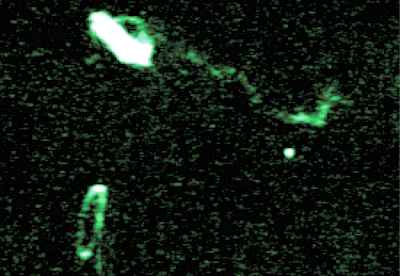
(Universe Today) Astronomers think they might have found a "dark galaxy", that has no stars and emits no light. Although the galaxy itself, located 50 million light years from Earth, is practically invisible, it contains a small amount of neutral hydrogen which emits radio waves. If astronomers are correct, this galaxy contains ten billion times the mass of Sun, but only 1% of this is hydrogen - the rest is dark matter. [...]
The team have looked at many other possible explanations, but have found that only the Dark Galaxy theory can explain all of the observations. As Professor Mike Disney of Cardiff University puts it, "The new observations make it even harder to escape the conclusion that VIRGOHI 21 is a Dark Galaxy."
The most common perception of galaxies seems to have been shattered, as apparently not all galaxies are lit by celestial lights. The international team led by astronomers from the National Science Foundation's Arecibo Observatory (as well as from the Cardiff University in the United Kingdom) are excited with the discovery and plan on searching for more of these dark mysterious behemoths. Image Below.

Description: Neutral hydrogen gas streams between NGC 4254 and VIRGOH1 21. Image credit: Arecibo Observatory, Photo from Universe Today.
Want more space geek news? Then subscribe below via email, RSS or twitter for free updates! Prefer another service? How about via RSS or follow Colony Worlds on Twitter!




![ColonyWorlds[at]Gmail[dot]com](http://img.photobucket.com/albums/v438/hiddennook/ColonyWorlds.png)







No comments:
Post a Comment
You can either visit the stars or watch them from afar.
But if you choose the former, you'll definitely get a better view.
~Darnell Clayton, 2007
Note: You do not need a Blogger account in order to comment, but you do need to solve the universal puzzle below.